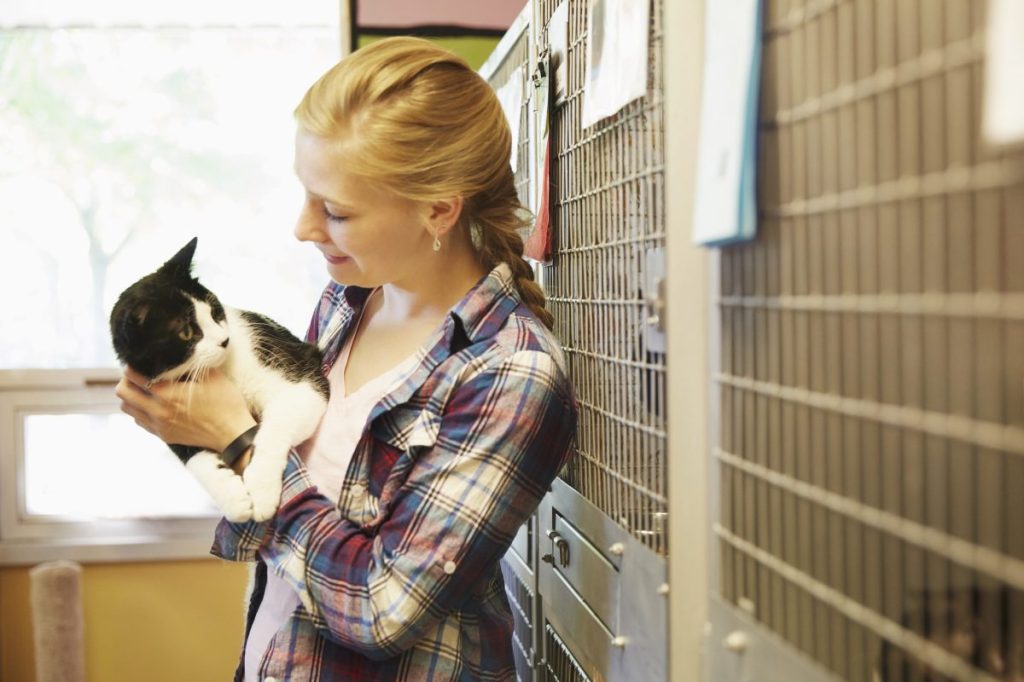A few years ago, a therapist, who I assumed had heard it all, looked at me in horror and judgment when I told her I felt helping animals was the most important work one could do.
“You can’t be serious. What about teachers?” she asked, incredulously. “Or doctors?” And then with outright disapproval: “What about firemen? What about ambulance drivers?” I thought she was done. “What about social workers? And nurses?” On the verge of tears: “What about therapists?”
In my own defense, I was simply trying to articulate what was true for me: that volunteering enables me to contribute to the world with tangible, if not always quantifiable, results. It is my purpose.
Helping animals grounds me
In no way was — or am — I suggesting that firefighters lay down their hoses and take up those wands cats get all excited about and head over to play with the kittens at the local shelter. (Unless they want to join in on helping shelter animals!)
The more I tried to make my point, however, the more unsettled the therapist became. Not surprisingly, our professional relationship ended shortly thereafter.
That’s OK. Instead of forking over good money to walk away feeling less understood, I came to rely on my shelter visits to keep me sane and grounded. Or at least nearer to sanity and grounded-ness than I tend to hover.
You get back more than you give
They say that with volunteering, you get back so much more than you give. I sort of cringe every time I hear that. Not because it isn’t true, but because it’s too simple; it doesn’t convey the depth of the experience of helping shelter animals. And it’s packaged too much like a lesson from an after-school special.
On some days, yes, time spent at the shelter is infinitely rewarding. You make a connection or discovery with a dog no one can quite figure out. (Aha! Sparky loves to play fetch!) Or a puppy I’ve been tracking for weeks beats parvo and becomes eligible for adoption.
Even when the work is hard — it’s cold and icy on the walking trail or the big dogs are particularly pully on leash — by the end of the afternoon, I feel filled up. There’s something reassuring about contact with an individual whose every display of emotion you can trust to be genuine.
It’s not always kittens, puppies, and rainbows
And then some days, I leave the shelter feeling totally drained. Heartbroken and angry and unable to give an iota more. I’m so tired. The distance I’ve moved the needle, in comparison to how far we have to go, is so infinitesimal, I can’t even bear to talk to my husband about it or try to make it make sense by writing it all down.
That’s when I realize something about the whole “you get more than you give” theory. It isn’t necessarily a warm fuzzy feeling or that satisfying “I’ve done something nice for someone” sensation.
It’s an accessible, real perspective that only truly comes into focus in the darkest moments.
We few, lucky humans have been granted the gift of choice, the luxury of control over our destinies. It should be easy to appreciate that, but I find I frequently need a reminder.
So if an abandoned old mutt can show gratitude for a few minutes of attention, find the strength to lick my cheek, or discover the courage to wag his tail on a lonely afternoon, that’s a treasure that can’t be bought. A lesson in hope that no therapist can as compellingly reveal.
Try volunteering
Well, this post was intended to be about how helping animals through volunteering impacts adoption. I’ve totally failed to make that connection thus far, so now here comes the cheap tie-in: volunteer.
The more exercise, care, and enrichment shelter animals get during their time there, the happier they are, and the more adoptable they become.
Can you imagine a more distinctly everybody-win cycle? With so many humans helping shelter animals and giving their time to rescues, companion animals will get adopted in record numbers. The shelters will need fewer volunteers, and we people can go back to finding other ways to keep grounded and sane.
And therapists will once again feel needed, cherished, and loved.




